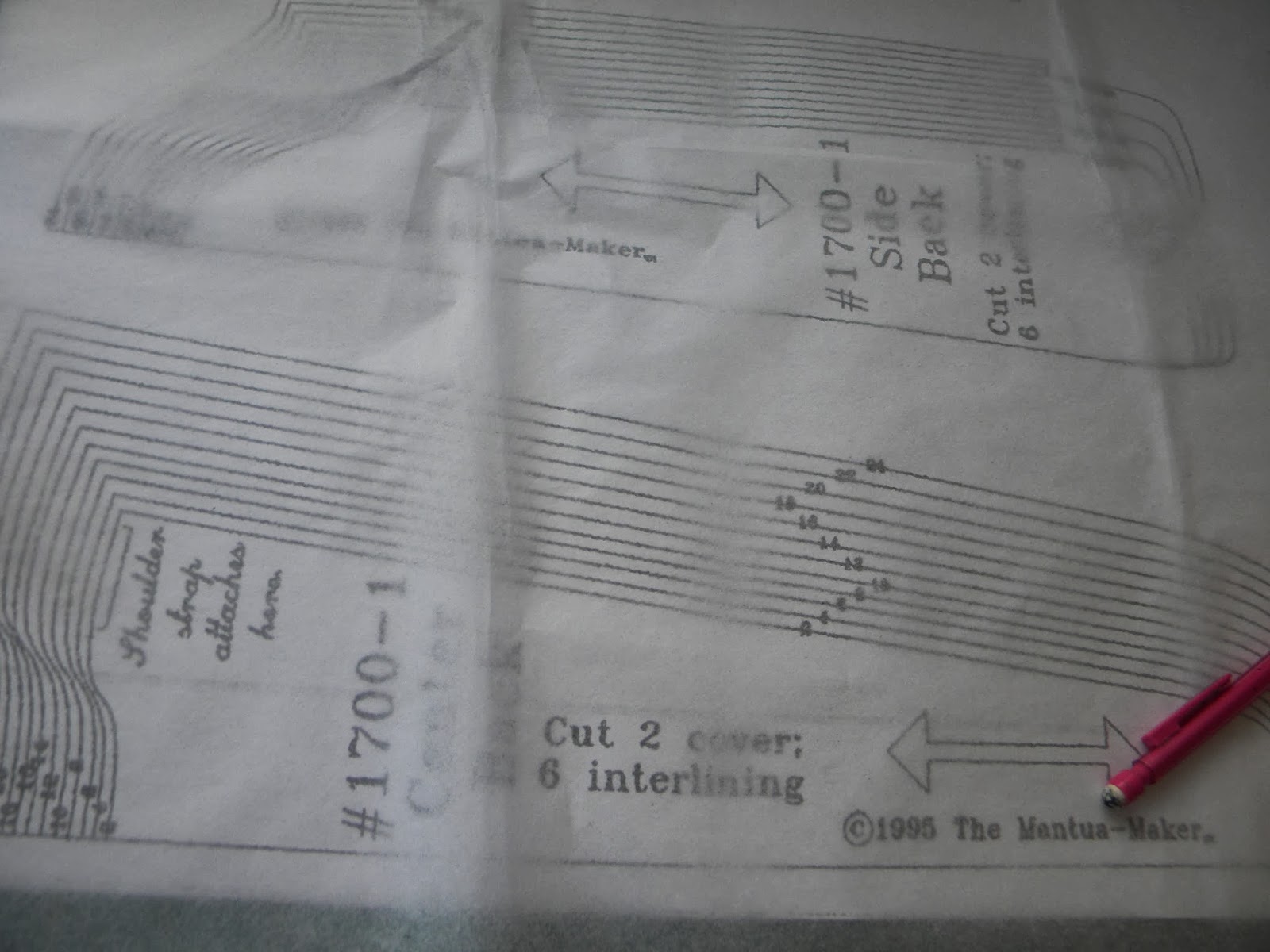I made the chemise for "under it all" for Historic Sew Fortnightly.
I wanted to make my chemise from pieces similar to what would have been used in the early 1700s. After some google searching I found the commonly referred to pattern here.
I had a hard time understanding the instructions so on my first attempt I had the arm gussets wrong. After some futzing around I figured out how to do the gussets properly. My first attempt was also big enough to use as a chair slipcover! I decided to Start over and leave out the extra pieces on the bottom. And again, I used the sewing machine and did not flat fell the seams.
Here are the pieces cut out. One body with the fold at the top to later cut the neck hole into. Two sleeves and two underarm gussets.
I placed the gusset square on the sleeve and sewed down to half an inch before the end.
I then pivoted on the bottom point and brought the adjacent side up to match the sleeve. The pivot point is by the middle pin.
Then I sewed the rest of the sleeve down the underarm from the pivot point to the elbow edge.
This is how it should look. I measured the sleeve opening plus gusset and marked the side seam on the body.
I pressed the elbow edge under one quarter inch then another quarter inch, then sewed it down.
I sewed up the side seams to where the sleeve opening mark was placed. Then I fit the sleeve into the opening. I made sure it all lay flat and I would not be making any pleats when I sewed the underarm pivot point.
I used a three inch wide piece of fabric, folded it in half and applied it as binding around the neck. I hand stitched an eyelet in the center front to thread the ribbon through to draw the neckline up.
Here it is all laid out. As you can see from the pictures of me wearing it, it is still too large around
I don't know if you can see the pencil lines but I am going to cut the sleeves off at the seams, cut the body on the pencil lines and then redo the set in sleeves. Maybe then it will be narrow enough and the sleeves won't be so far from my actual shoulders.
That's my chemise story. So I will be altering it as well as making a completely new set of stays that are two sizes smaller.
Thanks for stopping by.
Jeannine



























